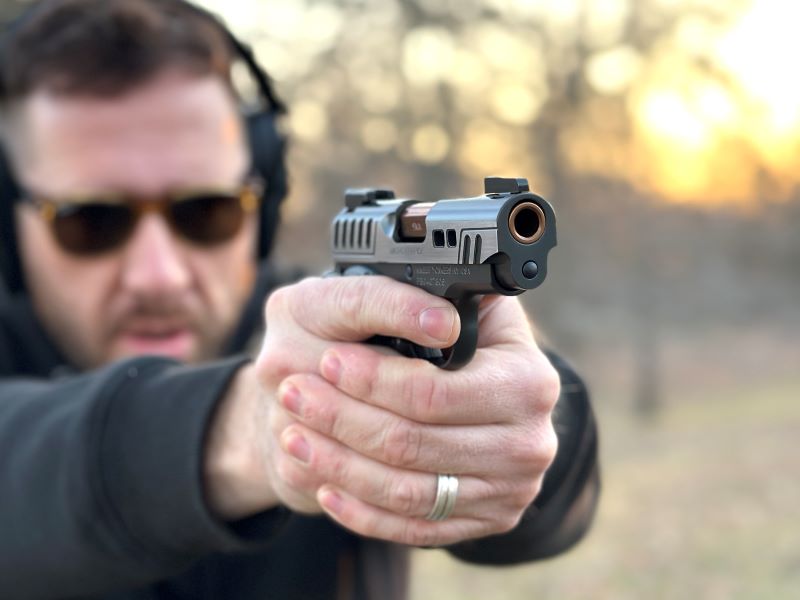There is a wave of people turning to CCW carry as an additional measure of safety and self-defense. Within that CCW world is an overwhelming number of firearms, holsters, lights, optics, and tactics. I’ve always felt the best firearm for self-defense is the closest to a full-size as you can reasonably conceal. For me, this means different sizes of guns at different times of the year. In cold weather, I can carry a larger gun than I can in the summer.

But even with an IWB (inside-the-waistband) holster, there are multiple carry options. There isn’t a right or wrong carry method (within reason), and some methods work better for some people than others. The two carry methods I use the most are strongside carry and appendix carry. We will talk about both of those carry methods right after I go over the Safariland Species holster.
Safariland Species Holster
Because Safariland is primarily a maker of military and police holsters, it emphasizes quality. What stands out about its holsters is their security and durability. I’ve worn them for years on duty and have seen firsthand how well they hold up, and I even use them for my CCW needs as well.

The belt clip works with belts up to 1.5 inches wide and can be rotated to accommodate different angles of carry. This holster is affordable and arguably one of the best qualities on the market. Retail for the Species holster starts at $37.99.
Strongside IWB carry
For years, this was the carry method I used for CCW because it was the closest to the duty carry position. It feels normal to reach to my side for a firearm on duty because I train with it so much. I want my CCW weapon to be as close to this position as possible for muscle memory. Strongside carry is one of the most common methods of carrying a firearm, regardless of whether it is an OWB or IWB method. Another style is small of the back, but it’s not as common as strongside and appendix. Having the gun right on your side is not as concealable as other methods, but it’s more natural.

If you have multiple layers of clothing on, it takes a lot of practice drawing from this position. The clothing needs to be pulled aside while you draw. This means you need to be able to reach around with your support hand and pull your clothes out of the way. Another method is to use your thumb on your gun hand and push your shirt up over the gun as you reach for it.
Appendix IWB carry
I didn’t even try appendix carry for years because it felt a little sketchy to me. When carrying off-side, there isn’t a lot of your body that can get in the way if it goes off. With appendix carry, the muzzle of your gun is often pointing at the inside of your thigh when seated. Coming from law enforcement, this is also where many untrained criminals like to stick their guns. There is a big difference, however, between carrying a gun in a quality holster and sticking it in the front of your pants.

Most modern handguns are reliable and have various types of safeties to prevent the gun from going off unintentionally. Guns with shorter barrels work best with this method of carry. In the past, I’ve carried an M&P Shield, Kimber Micro 9, Ruger Max-9, and other compact guns without issue. If you are used to carrying a firearm on your side, it does take some training to develop that muscle memory. During an incident, you don’t want to reach to your side for a gun that’s in the front.
Which method is best for you?
After carrying both ways for some time, I’ve started to be fond of appendix carry for CCW and off-side carry for OWB holsters. One isn’t better than the other; they are just different. Both methods have advantages and disadvantages that each person will need to consider. If you’re not sure which method to use, try both for a while and see which one is more comfortable. Just remember to do some training on the range with any holster and carry position you choose.


